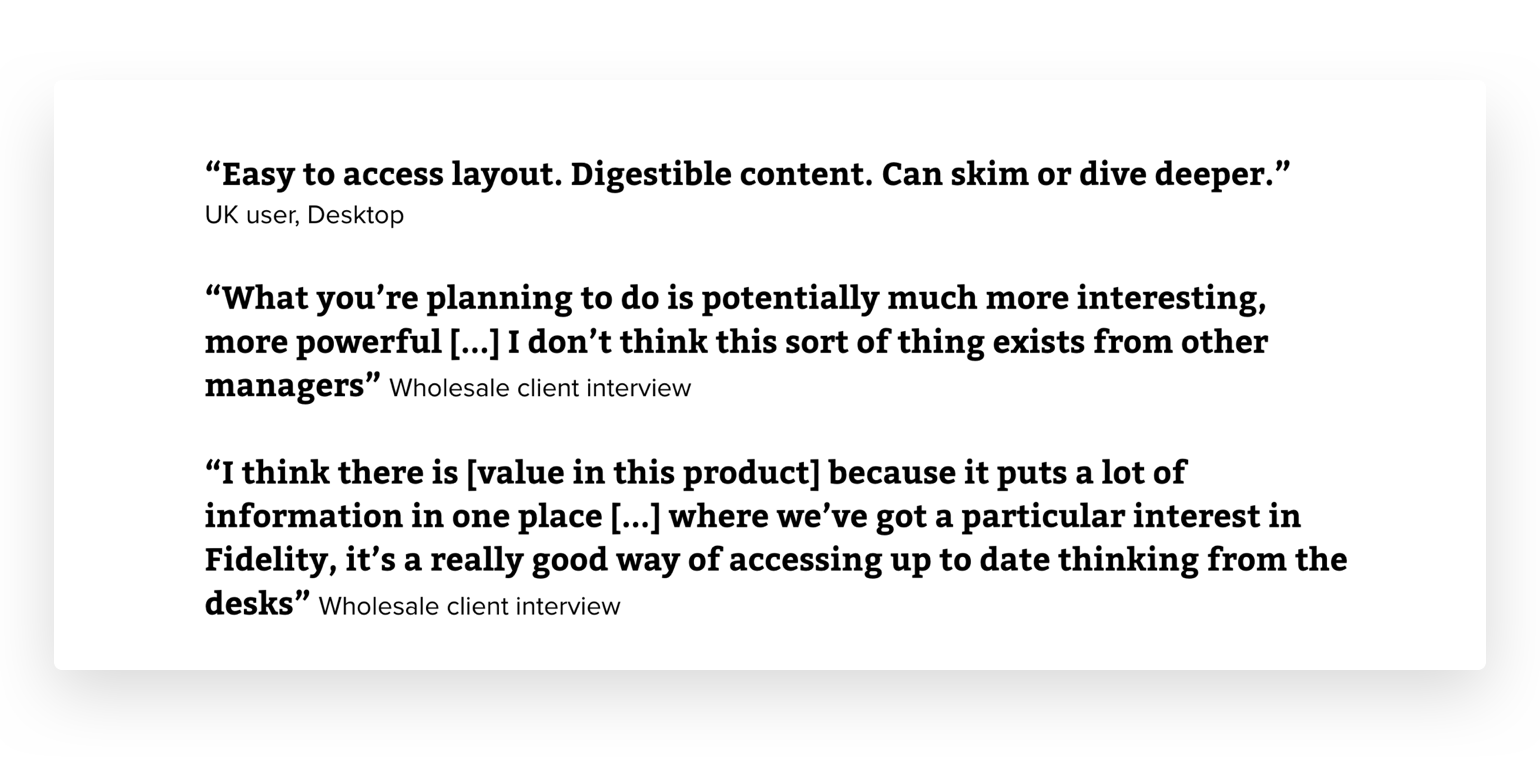Fidelity International
Fidelity International is one of the world’s best investment management companies.
I worked as a Product Design Consultant to improve the Outlook, one of their editorial products.
Discovery: what’s an Outlook?
Traditionally, an outlook is a document outlining financial market predictions and investment recommendations for the trimester ahead. It is a common publication in the financial sector.
Externally, it aims to increase a firm’s brand awareness and position it relatively to competitors.
Internally, it gives portfolio managers and other stakeholders an overview of a firm’s view of the market, so they can advise their clients accordingly.
As the start of the project, Fidelity International’s Investment Outlook was a quarterly publication, distributed as a PDF via email, and distributed at events as a hard copy.
We were brought in to understand the current challenges and opportunities of Fidelity’s Outlook. Could it be something more than a PDF?
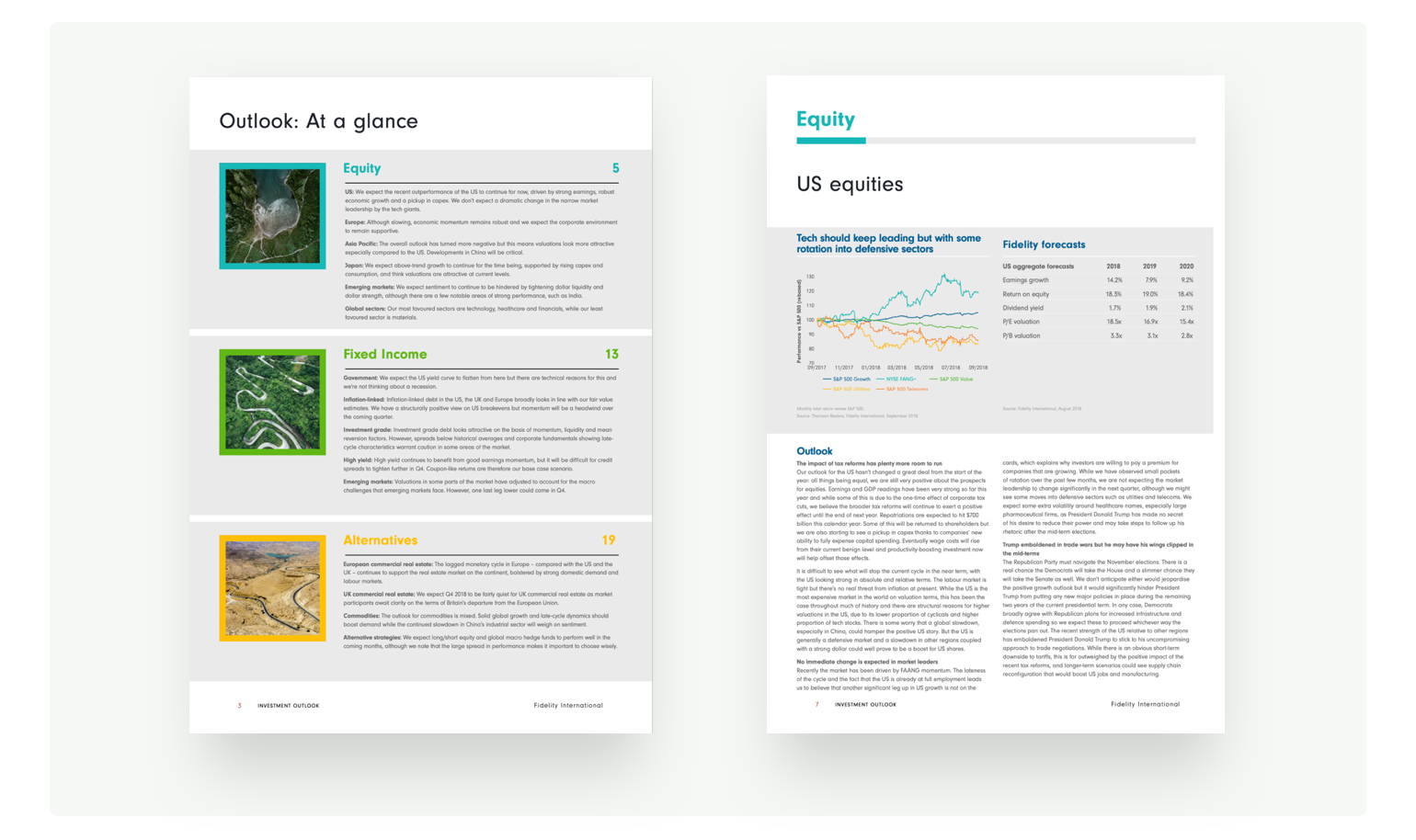
Project Goals
- Create the vision for the new Outlook
- Facilitate stakeholders interviews and workshops to co-create Outlook solution
- Validate user needs through end-user testing, experimentation, and by performing feasibility checks
- Build actionable product strategy and project roadmap for the Outlook
Ideal State
Our objective was for Fidelity’s Outlook to become “the authority on global markets, providing an easy-to-consume, quality distillation of how Fidelity is investing and why.“
Research
Qualitative & Quantitative Data
We began by collecting qualitative data by interviewing 40 (!) stakeholders from several different branches of the company. We also sent a survey to understand better how people used the Outlook, and the areas we could improve on.
Unfortunately, the PDF format allowed for very minimal analytics to be leveraged, to understand how the wider audience consumed the product.
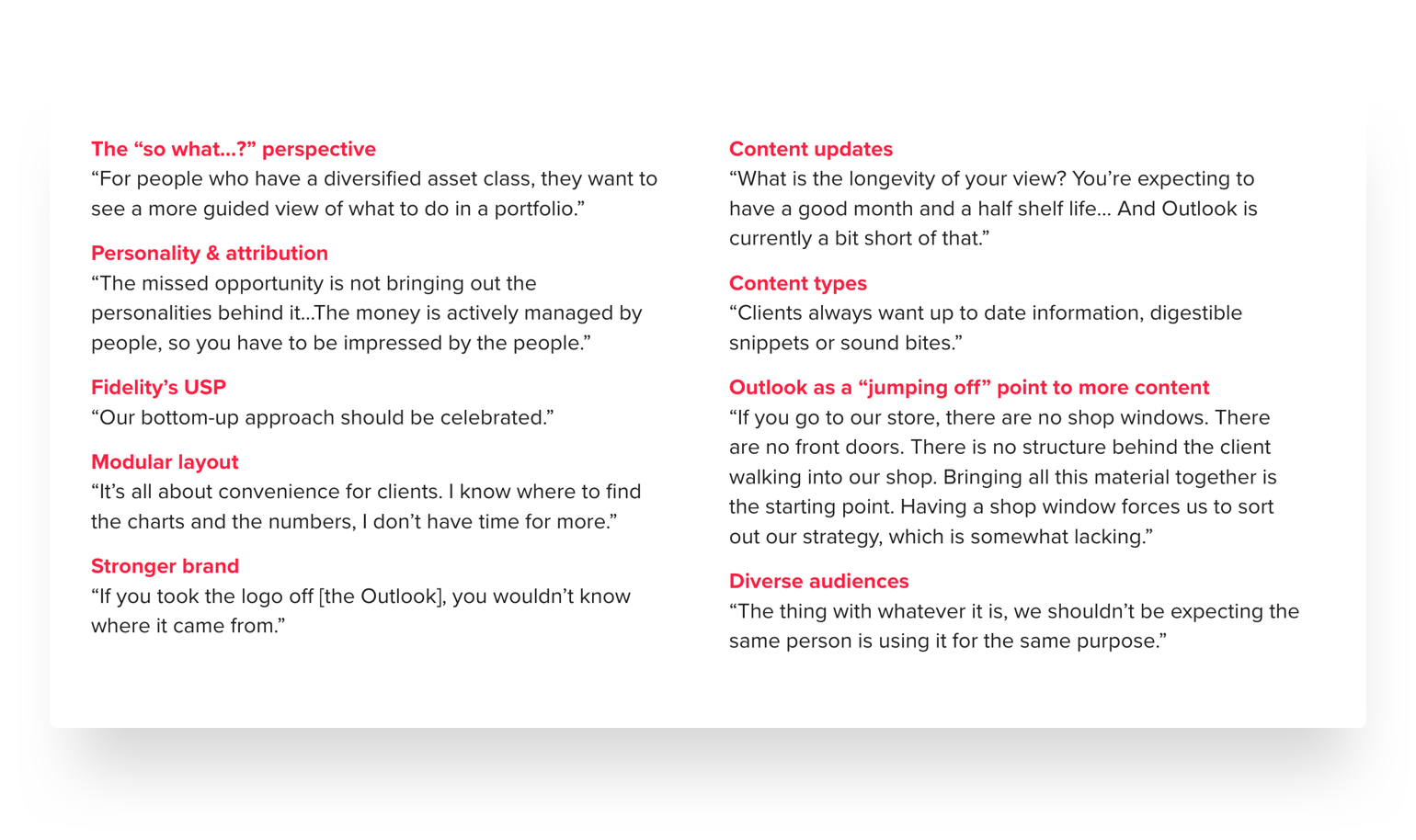
On the editorial side, we benchmarked Fidelity’s site against the competition, and conducted an audit of the publishing process.
Several pain points were highlighted, the main one being the freshness of the content: due to the lengthiness of the process, the forecast for the upcoming quarter was often already stale at the time of publication.

The research enabled us to narrow our focus, and refine several problem statements.
How might we…
- …raise awareness of our proprietary tools and our people?
- …represent a house view and a bottom-up view at the same time?
- …differentiate Fidelity’s outlook and create a stronger brand?
- …keep our content more fresh and relevant?
Phase 1: Ideation
We started by reorganising the Outlook’s Information Architecture, and ideate on paper prototypes.
We shared our first low-fidelity prototype internally and collected feedback. Access it (Disclaimer! First draft!) on Invision here.
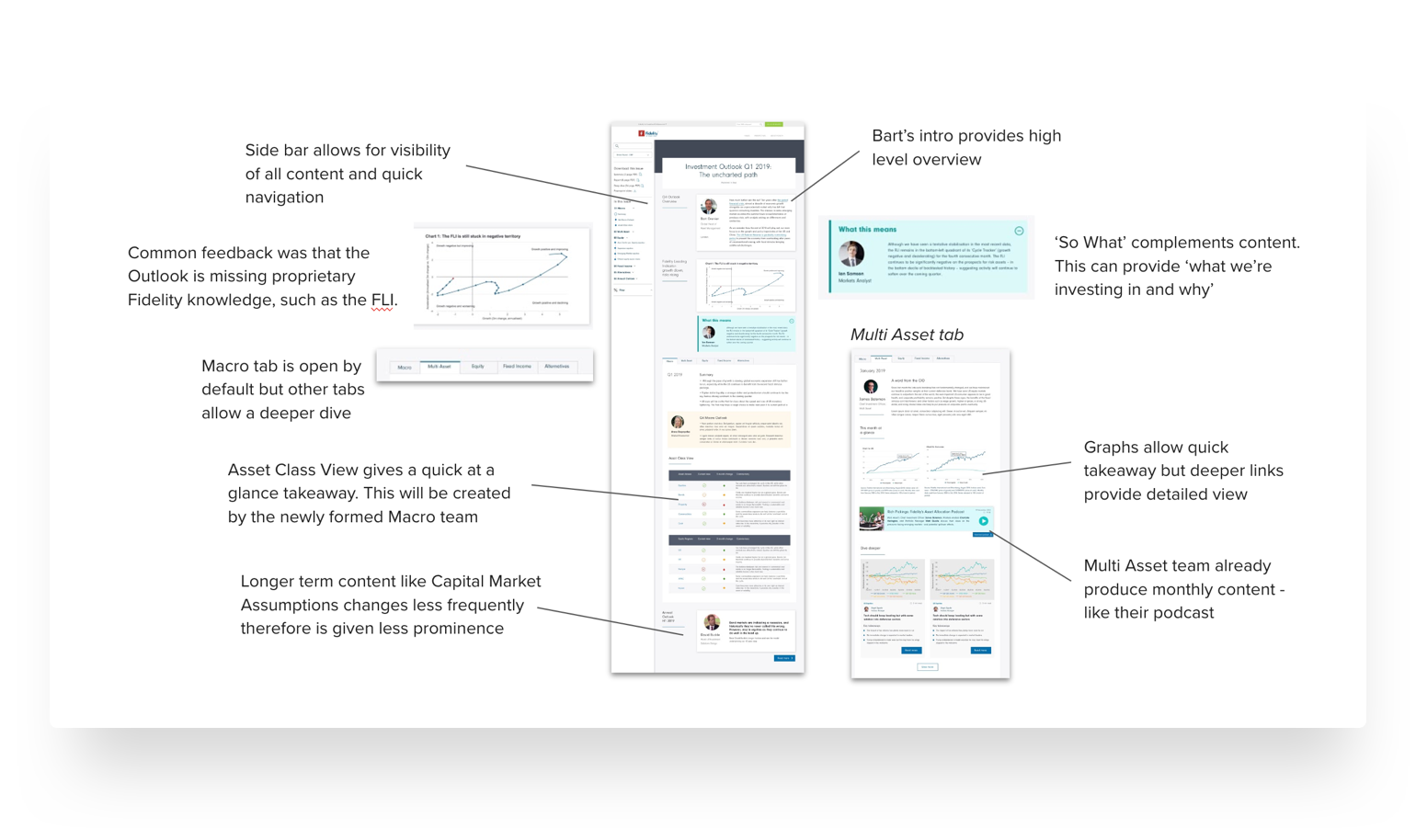
Phase 2: Design, Test, Learn, Repeat
Phase 2 enabled us to build a MVP of the new Outlook site, set up analytics and learn more about our users using Lean principles.
We used Hotjar as a means to collect quantitative data, developed a design system and bespoke components, and our cross-functional team delivered a functioning online version of the Q2 Outlook – fresh content and features included – in just a few weeks.
We also ran a design sprint and collaborated with the internal design teams to improve the UI and overall experience.

Design wise, we took the following requirements into consideration, once the features were defined.
- Viewports: The product needed to cater to viewports ranging from mobiles to multiple monitors setup
- Scanning & Deep Dive: The Outlook needed to be easily scannable, for time-poor users, but equally give more engaged readers the detailed information they were seeking.
- Brand Guidelines: Fidelity’s editorial brand was very generous with white space. Our users were familiar with consuming dense data and tables.
- Too dry? Too fun? Too generic? The right balance needed to be struck.
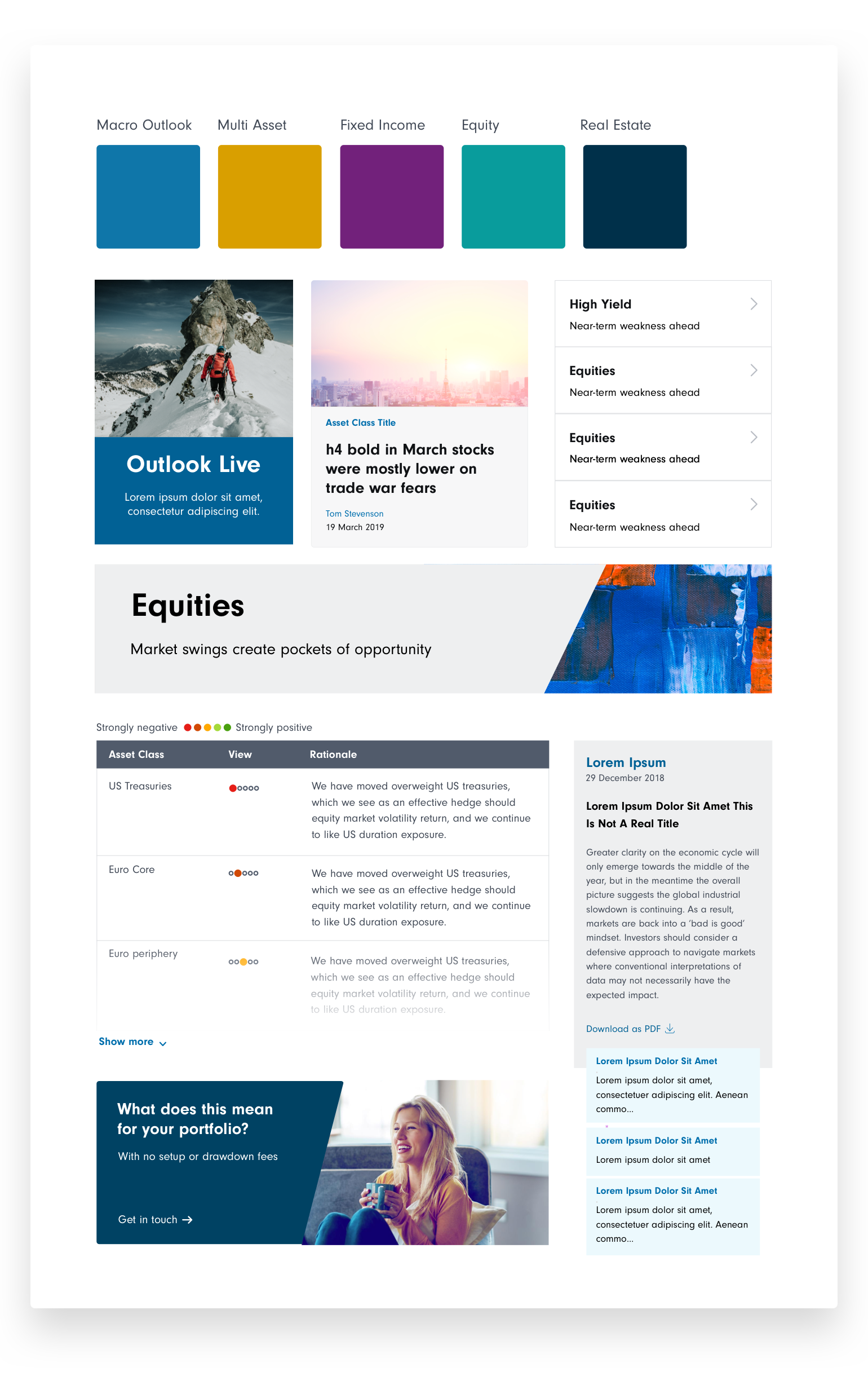
Final state
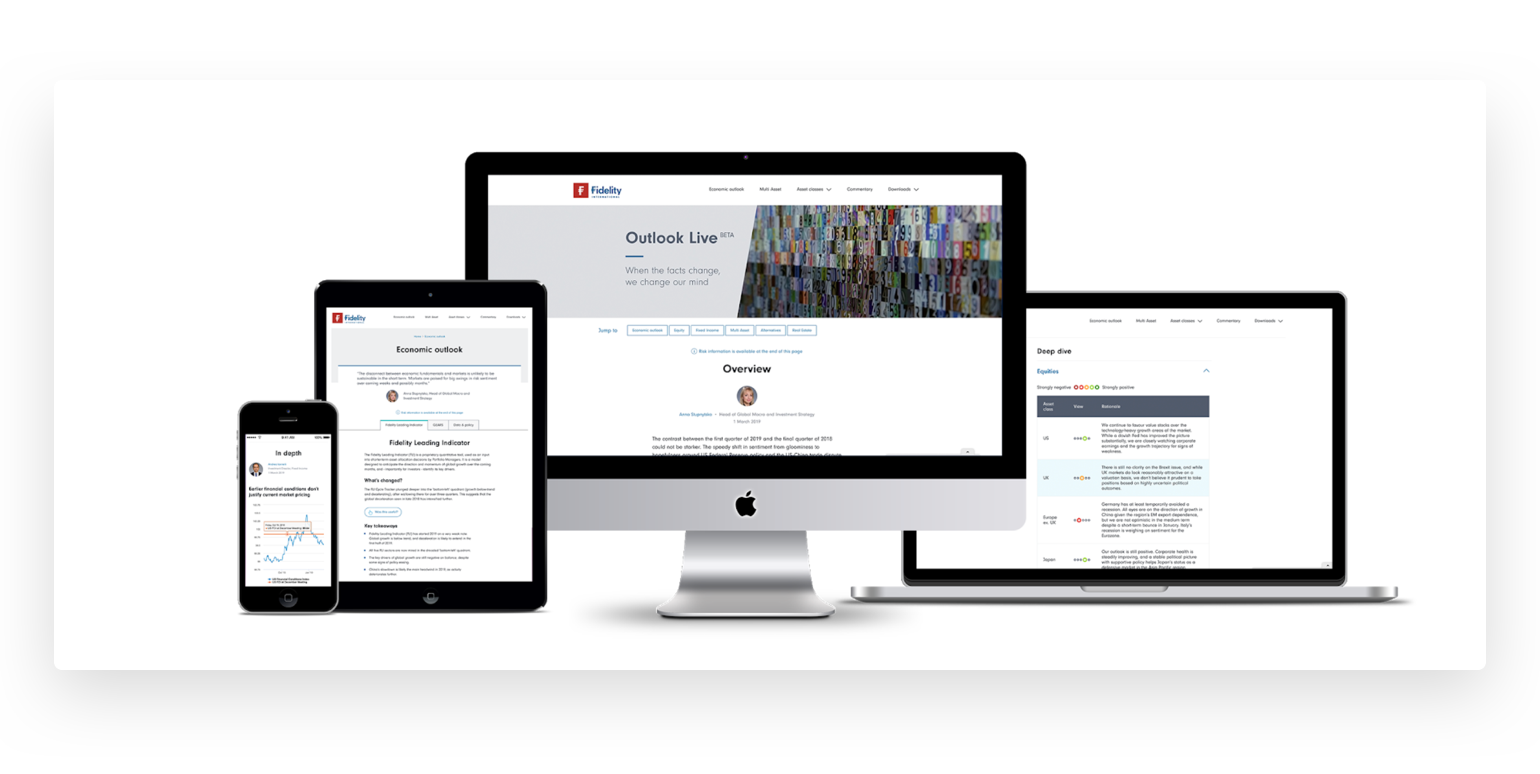
After 6 months, our cross-functional team collaborated with the internal IT teams and built a responsive CMS platform, for contributors to edit and upload content as a business, rather than have content funnelled through the editorial team. Data is now also collected to support future iterations on the platform.
Users can now:
- Access current news and up to date articles on Fidelity’s latest financial advice, along with interactive graphs, complete with publication date and time horizon of each view expressed.
- Learn about “Investment implications”, a new section which clearly outline Fidelity’s guidance and point of view
- “Key Takeways” give the bullet point content for the busy users, sub-asset classes are split onto different pages accessible sat the right level
- …and still download the PDF, should they want to!
